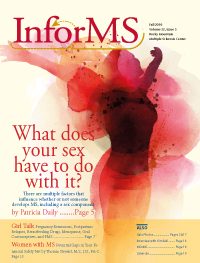The people with the greatest likelihood for being diagnosed with MS are women between the ages of 20 and 40. The demographics of MS create special economic risks that women with MS, especially, should keep in mind.
Risk I : Stay-At-Home Moms with MS
The typical age for being diagnosed with MS overlaps considerably with the years for raising children. According to the Pew Research Center approximately 30% of mothers with children younger than 18 do not work outside of the home for a period of time.
For people with chronic diseases like MS, opting out of the workforce to care for children creates a special risk. While not working, stay-at-home mothers do not pay Social Security taxes and – if they stay out of the workforce long enough – may lose access to the primary economic safety net in the United States: Social Security. If a woman becomes disabled (unable to work) while a stay-at-home mom, she may not be eligible for Social Security benefits when she needs them the most.
The rules for remaining insured for purposes of disability are complex. But, to simplify a bit, the major requirement to understand is that you need to have worked five of the last 10 years. (Special rules apply for people under the age of 31.) Therefore, if you have not worked and paid Social Security taxes during the last five years, you will no longer be insured. If you become disabled, you will not be able to access disability benefits, which include an income and Medicare. A typical Social Security income is related to previous earnings, but $1,200 per month is about average, with additional benefits (up to 50% more) for children under the age of 18. And there is a critical benefit available for children who themselves become disabled prior to age 22. These are all-important benefits for those who lose the ability to work.
Earning just a little over $5,000 in a year could help also maintain insured status indefinitely
For those who want to opt out of the work force for years at a time, there are a few ways to avoid this problem. First, the stay-at-home mother can limit her work hiatus to four years. Assuming she had been a steady worker prior to opting out, she should avoid the problem of losing Social Security Disability insurance because she will have worked five of the previous ten years. Second, she can consider working part-time. Earning just a little over $5,000 per year in a year (a number that changes yearly, so look this up each year) will also maintain insured status indefinitely.
Risk 2: Teachers with MS
About 75% of public school teachers are female, which also reflects the demographic characteristics of people with MS. Public school teachers typically do not pay into Social Security, but into an alternate system, PERA (Public Employees Retirement Association). Generally, PERA will provide economic security for people who become disabled while working. But PERA does not protect people who become disabled after opting out of the work force. In Colorado, PERA must receive your Disability Program Application no later than 90 days after terminating employment. So teachers who opt out of the workforce are unprotected in the event that they become disabled a mere 90 days after stopping work! (In contrast, as explained above, people who have paid into Social Security are generally protected in the event of subsequent disability for a five-year period after they stop working.)
There is an additional risk for teachers and for others who pay into PERA. Those who transition from public employment (and systems protected through PERA) into positions protected through Social Security will create a large gap in disability protection — up to five years. Those who are beginning to experience MS-related challenges in the workforce should be very careful during such transitions. It may be best not to change from one system to the other during this time. Or it may be important to find a private employer with good private disability benefits during this period of time. In any case, careful planning is critical.
Mr. Stewart directs the RMMSC’s Disability Law Program. For a free consultation, please contact RMMSC’s Disability Law Clinic at (720) 301-9708.


